
A Healthy Part of a Balanced Diet!
 Large Crickets
Large Crickets
A natural first choice for reptiles, and a staple food for their diet.
Our live crickets are available in ten sizes ranging from pinhead to adult.
 Small Crickets
Small Crickets
Both small and large crickets are chock full of protein, vitamins, and minerals
 Fruit Flies
Fruit Flies
Two sizes available – these flies don’t fly—excellent for a wide variety of pets that need small prey, including Bettas! Choose from two sizes: Drosophila melongaster (approx. size of a pinhead cricket) and Drosophila hydei (approx. size of a 1/8" cricket)
 Mealworms
Mealworms
Mealworms are a good source of protein, and are also good for feeding wild birds. Our mealworms come in five sizes: mini (1-4"), small (1/4"-1/2"), medium (1/2"-3/4"), large (3/4"-1"), and giant (1-1/2")
 Giant Mealworms
Giant Mealworms
Make your pet’s diet diverse and complete with giant mealworms. These make a great fishing bait too! Our Giant Mealworms are 1-1/2" in size.
 Red Wigglers
Red Wigglers
A tasty treat for turtles and amphibians. Also make an excellent composting worm and fish bait!
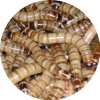 Superworms
Superworms
These active worms are attractive to pets, plus they’re easy to digest
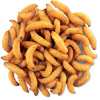 Waxworms
Waxworms
A tasty treat, these high-fat, grub-type larvae will tempt even finicky pets. Also feed them to wild birds or use as a fish bait!
 Nightcrawlers
Nightcrawlers
Not just great for bait—turtles love them too!
All Natural Food Source
What’s on the menu for your pet? If they could choose for themselves, they’d take live food every time! Most reptiles, amphibians, and arachnids like their meals served still moving. Nothing gets their appetites revved up like hunting down a tasty treat. Live food is also the best way to provide complete nutrition! Just the way nature intended!
Diversity
What you have always heard about variety is true! It is the spice of life, even for your reptiles. Every good herp deserves a healthy treat. You’ll love your pet’s reaction when you spice things up with a diverse diet. Give them what they crave!
Amphibians
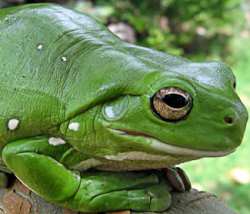
Cold-blooded, smooth skinned vertebrates, such as frogs or salamanders that hatch as aquatic larva with gills. The larva then transform into as adult having air-breathing lungs.
Common Types:
-
Salamander
-
Tree Frogs
-
Dart Frogs
Staple Food: Small Crickets
Treats: Red Wigglers, Fruit Flies, Waxworms
Geckos (Day)

These tropical and subtropical lizards have toes padded with setae containing suction cups that enable them to climb on vertical surfaces.
Common Types:
-
Grandis Day Gecko
-
Standing
Staple Food: Large Crickets
Treats: Waxworms, Superworms
Lizards
Includes numerous reptiles that characteristically have a scaly elonged body, moveable eyelids, four legs, and a tapering tail.

Common Types of Small Lizards:
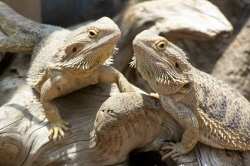
Common Types of Large Lizards:
-
Bearded Dragon
-
Leopard Gecko
Staple Food: Small crickets for small lizards; Large crickets for large lizards
Treats: Waxworms, Superworms
Turtles
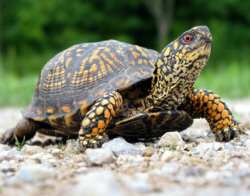
Various aquatic or terrestrial reptiles with horny toothless jaws and bony or leathery shells into which the head, limbs, and tail can be withdrawn in most species.
Common Types:
-
3 Toed Box Turtle
-
Red Eared Slider
Staple Food: Large Crickets, Nightcrawlers, Red Wigglers
Treats: Waxworms, Superworms
Chameleons
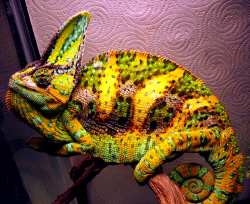
Various tropical Old World lizards characterized by their ability to change color.
Common Types:
Staple Food: Large Crickets
Treats: Superworms, Waxworms
Monitors
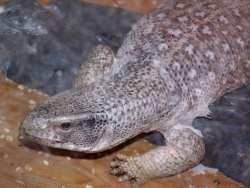
Tropical carnivorous lizards from the east Indes, Southern Asia, Africa, Australia,a nd New Guinea. They range in length from several centimeters to 10 feet.
Common Types:
Staple Food: Large Crickets, Superworms
Treats: Waxworms
Arachnids
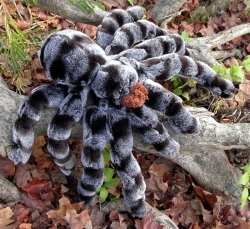
Arthropods such as spiders, scorpions, mites and ticks. They’re characterized by four parts of segmented legs and a body that is divided into two regions, the cephalothorax and the abdomen.
Common Types:
Staple Food: Large Crickets
Treats: Waxworms
Other Pets
A wide variety of birds, fish, and exotic mammals enjoy live insects.
Wild Birds – Chickadees, bluebirds, woodpeckers, and wrens enjoy mealworms
Fish – Bettas, guppies, angelfish and other larger surface feeding fish eat fruit flies
Hedgehogs – These spiny omnivores eat nearly any insect including mealworms, superworms, earthworms, crickets and waxoworms
Sugar Gliders – Diversity in diet is extremely important for these insectivores. This variety includes mealworms, waxworms and crickets.